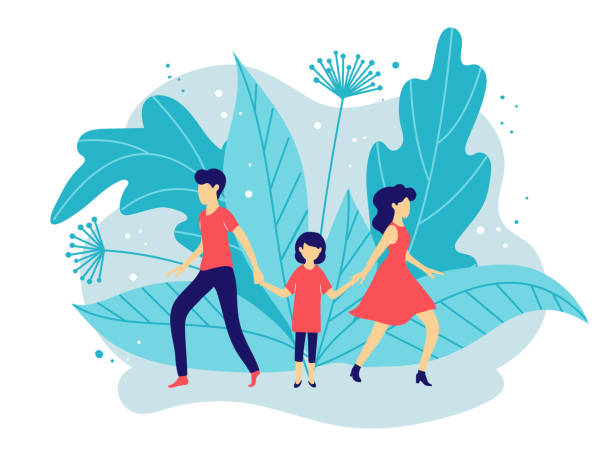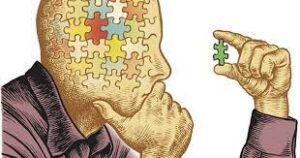Divorce Resource Guide





The choice to separate or divorce from a partner is complex and incredibly difficult. However, separation or divorce can be the best decision for everyone involved, including the children. Research has shown that children who are exposed to open, unresolved conflict between their parents regularly are more stressed than children from divorced families. Divorce can provide a model of adult behavior and relationships that emphasizes working out problems with compassion, wisdom, and appropriate action. Among the many decisions on reorganizing your lives, are choices about parenting. When divorce is the best option, there are specific ways parents can make the transition smoother and support their children’s mental health.
Divorce can be an opportunity to consciously shape your family bonds in a way that feels positive and powerful. Spending a little time reflecting on what was and was not working in your former family configuration will go a long way in forging this path forward. How do you want your new family to relate to each other? What are each family member’s roles and how do they express these in the family system? What aspects of family are most important to you – time spent together, emotional support, humor, respect, independence? In what ways will you be sure these aspects flourish in your family moving forward?
Divorce or separation usually causes major disruptions to routines and schedules. Consciously striking a balance between honoring old routines and establishing new ones can help ease the transitions and provide a sense of stability. Maintain routine activities like eating dinner together, going on walks, bedtime routines or having weekend movie nights. Make a list of these routines and highlight the ones you are purposely going to stick to in this transition. This helps your family stay connected as well as help maintain typical expectations for behavior. For instance, maintaining your typical chore or homework schedule can help your child meet their responsibilities at home and at school, which in turn helps them feel stable and confident. You can give a little more grace and patience, but if routines and schedules change drastically, it can be very confusing and make your children feel more out of control.
It’s important to spend time together as a family. This can be with or without the other parent, whichever works best for you and the new relationship you are creating with your former partner. Quality time is a great tool for helping kids feel safe, loved, secure in their relationship with you, and can help to establish a new sense of normal.
Children can be very concrete, which means they associate complex ideas or relationships with more simple or physical things or spaces. Their understanding of family relationships, stability and safety may be associated or linked with a physical location, like the former family home. Moving to a new home or visiting a parent in their new residence may have a larger, destabilizing emotional impact than expected, bringing sadness, anxiety or negative behaviors to the surface. You can increase your child’s sense of control and ‘ownership’ over this new space by letting them arrange furniture, pick out small items to decorate, and shift some belongings from their previous home into the new space.
Keeping the lines of communication open between you and your ex-partner regarding the children is very important. Research has consistently shown children cope best when they are not exposed to adults’ ongoing conflicts. If there is high conflict between you and your ex, keep any conversations to basics like pickup and drop off times, doctor’s appointments, important school dates, or necessary information about your children.
Communication should be between the adults. Do not use your children to send messages back and forth between your ex-partner. Possible ways to exchange information include email, a book that goes back and forth with the children or one of the many co-parenting apps that are available. They can help maintain privacy by allowing you to remain in contact with your ex-partner without giving out phone numbers or email addresses, keep track of important dates in the schedule, share key information about the child(ren), and transfer money. Some are free and some charge a fee. In Oakland County, Family Wizard is often the recommended tool for communication between co-parents.
This can be one of the most challenging aspects of managing child-parent relationships during and after divorce. The pull to express to your child why and how you, or your child, were wronged can be intense. You may want to describe their other parent’s shortcomings, hurtful behaviors, or negative choices as a way to cope with your own feelings about the situation, or validate the child’s. And while helping to validate a child’s hurt feelings is important, ongoing or regular disparaging comments about the other parent can be very harmful to a child. This is because when we are little, we form our identities and stable sense of self by associating with our caregivers and loved ones.
When you speak badly about your ex, your child folds these words into their understanding of themselves, and this hurts your child, as well as your relationship with your child. Eventually the child’s identity becomes more independent and isn’t so entwined with their parents’. As your child grows and matures, they will be increasingly aware of relationship dynamics and come to their own understanding of their parents’ behaviors. Providing them the room to develop their identity and stable sense of self without disparaging their other parent sets them up for resilience.
Unless safety is a concern, children benefit from strong relationships with both parents. It’s in the best interest of your child to support the other parent’s connection in their life as best as you can. Of course it’s hard to do at times, but try to keep your anger, resentment, blame, jealousy, or hatred from impacting your child’s relationship with your ex. In the aftermath of divorce or separation many people need help sorting through and coping with their strong emotions, and this is totally normal! Reach out to friends or family to help you process the negative emotions and frustrations, or reach out to us for support.
When divorce is the best option for the family, it can be hard to forge your new family portrait. While this process is difficult, with time and support, families can find ways to grow stronger together, open the door to new beginnings, and create healthier family dynamics overall.


With all the messages on tv and the media around Valentine’s Day it’s easy to get caught up in the idea that having a healthy, loving partnership with someone is the absolute key to happiness. We get the message over and over again that having that special someone will improve our life and permanently elevate our mood in countless ways. But this actually isn’t true! Research on happiness shows that we all have a baseline level of happiness that moves up and down throughout our life. Happiness is a result of the complex interactions of our genetics, circumstances, activities, and choices. We tend to have a stable, individualized set point for contentment and happiness throughout life that we return to in between the ups and downs. Romantic partnerships are just one aspect of our lives that moves happiness up or down from that baseline level, but it is not the only one! When it feels like romance is alluding you and dragging down your mood, here are some steps you can take to feel better:
When we are empowered to focus on important aspects of our lives and our accomplishments, outside of romantic relationships, our happiness grows. Determining your values and moving towards a life that follows them, building in activities that bring joy and provide a sense of mastery, we are choosing an empowered focus on life. Your values help point you in the direction of what actions to take in your life so that it feels authentic and meaningful, and often result in relationship building. However, be empowered to develop a wide variety of fulfilling relationships; there are many important relationships in life outside of romantic ones! Use the time when you are single to build connections with family, friends, or members of your community that are important to you.
Focus on areas of your life that make you happy or give a sense of mastery. This means engaging in activities that help you feel confident, capable and in control. It could include small everyday chores and tasks or bigger commitments like reengaging in or starting new hobbies, traveling more, or getting active within your community by volunteering. Take the time to build in activities that bring enjoyment and leave you feeling energized and happy. Being single is a great time to reflect on what’s important to you and build the important practice of good self-care.
It’s also a good time to reflect on all that you have accomplished. Accomplishments are often not recognized and celebrated the same for those who are not in a relationship. So be sure to take the time and find ways to feel rewarded and proud of your accomplishments, big and small. Surround yourself with people who can celebrate them with you.
Most of us have regrets from past romantic relationships or opportunities for romantic experiences that have passed. Navigating through regret or the grief of ended relationships is an important piece of being single and thriving. We have a window of opportunity in these challenging feelings; we process them, learn what these emotions are teaching us, and let them go. Or, do you find that these regrets take on a life of their own, grow, and become amplified over time? Do they they become obsessive thoughts or worries? Thinking about the situation in a productive way is helpful, but when we obsessively dwell on certain thoughts or feelings it can make our thinking less rational and make us feel worse. Constantly running on the thought hamster wheel points your attention away from what is good in your life and zaps your energy. It’s important to “stay in the ick” long enough to understand where it’s coming from, learn from our regret and grief, but allow ourselves to move forward.
Rather than staying stuck in the bad feeling, ask yourself “What aspects of the situation are in my control?” For the parts you have control of ask “What productive action can I take to resolve the feelings of guilt or regret?” Additionally ask “What would you say to help a friend in this situation?” and “How can I show myself compassion in this situation?” Learning from the situation and finding areas of growth or ways to accept and love parts of yourself can be healing.
When you feel stuck, train yourself to recognize the thoughts that keep recurring. The next time the thought comes up, engage in activities that require your full attention, help you stay in the present moment, or act in the opposite of the feelings it brings up. Things like watching a favorite tv show or movie, going to trivia night, exercising, remembering happy times, singing, or dancing to your favorite song and keep you in the present moment, stop the negative thoughts, and help you continue on with the things you need or want to get done.
Remember, being single isn’t a bad thing! There isn’t a rule anywhere that says you have to be in a romantic relationship. In fact, we are always in an ever-evolving relationship with ourselves. We are given a gift, an opportunity to truly learn who we are and nurture our soul with our interests, hobbies, friends, and family. Lean into the good things and embrace what life has to offer, regardless of relationship status. Feel how empowering it can be to be single and thriving.



The holidays are here and for many people that means that they are feeling higher levels of stress than usual. In a survey published by the American Psychological Society, 61% of respondents reported that the holidays were a significantly stressful time for them. One of the most challenging holiday stressors is managing our relationships this time of year. But why can our relationships with friends and family be so challenging during the holiday season and what can we can do to ease this stress?
First, it can be difficult to meet the expectations that people in our lives have regarding the holidays. Our family, friends or significant others may want us to attend a certain get together or buy a particular gift. We may end up feeling like we disappointed them if we are unable to anticipate or meet these expectations. We also often set very high expectations ourselves, leading to stress and relationship conflict. Second, the heightened pressure of the holidays can worsen already existing relationship stressors. The patterns and dynamics with people that you struggle to get along with during the rest of the year may be much more pronounced during the holidays. Third, the holidays often remind family members of loved ones who they have lost. This contributes to an emotionally charged environment that can be difficult to navigate while we are busy with a hectic holiday schedule. The good news is that there are some things that we can all do to better manage relationships during the holidays:
You have the opportunity to align your expectations with your situation and clearly communicate. Unspoken expectations are often unmet expectations. Be clear about what you want and ask others directly what they want. However, it is also important to remind yourself that holiday stress is often related to unrealistic expectations that nobody can live up to. Do not take on the responsibility of creating an ideal holiday experience for your family, friends and/or partner. Everything is not going to go perfectly, and you must remind yourself that perfectionism steals opportunities for connection and joy.
A lot of interactions this time of year aren’t really under our control, and this can cause increased stress. However, we can contribute to creating a healthier and less stressful environment for the holidays. You can choose what you focus on, what your emotional reactions are, and how you respond to others. This time of year, it reduces stress to focus your energy on finding even small things that grow gratitude. In stressful relationships, you can search for what you might have in common, instead of differences that drive you apart. We also often have to practice more ‘letting go’ and acceptance at the holidays than is typical. Giving up control and practicing radical acceptance can actually help you cultivate healthier interactions. You can, however, influence others’ behaviors and interactions with how you choose to regulate your emotions and respond. You can also consider asking everyone at a holiday gathering to share something that they are grateful for. Research tells us that expressing gratitude is correlated with improved stress management and reduced conflict.
‘Tis the season for holiday treats, drinks, stuffed stockings late nights and latkes. While this can fill us up with joy, this deviation from our typical routines can also take a physical and mental toll. It is important to remember that we cannot be at our best for family and friends if we are not attending to our own psychological and physiological needs. Take time to exercise, meditate, or engage in other stress management techniques. When we are juggling busy holiday schedules it can be easy to overlook the basics, like drinking enough water and getting adequate sleep. Make sure that you attend to your emotional and physical needs so that you can enjoy your holiday time with the people that are important to you.
Whether you’ve lost someone recently or are grieving a lost relationship, making space and time for grief is important during the holidays. This space allows us to recognize and validate the experience and not let it overshadow opportunities for joy and connection. Take time to purposefully commemorate and honor your loss and find moments to connect with others around this loss.
Reach out; the people around us often do not realize that we are struggling. Identify a family member or friend that you can talk to when you are feeling stressed. They may be going through a similar experience, and you can support each other. Research shows that when people are feeling stressed, they often feel isolated, and this makes the situation worse. Reach out and let someone know that you are feeling stressed. And of course, give us a call –we are here for you and want you to have a great holiday season.



Currently, men are experiencing mental health distress at alarmingly high rates. This distress may look different than stereotypical anxiety or depression, but causes just as much disruption in life. Research tells us that men tend to focus distress outward, engaging in externalizing behaviors such as initiating more relationship conflict, throwing themselves into work, using alcohol or other substances, and/or increasing time spent on ‘escape’ type activities such as video games. Despite how disruptive these behaviors might be to their lives, men are far less likely than others to seek help. One of the main reasons is due to the stigma associated with seeking mental health services. Though there has been notable progress in reducing the stigma of seeking mental health services in recent years, there is still much work to be done.
On average boys receive less social emotional coaching as compared to girls. Throughout childhood, adolescence, and into manhood, men receive messages that often inhibit and even punish genuine emotional expression and help seeking. This creates significant barriers to acknowledging distress and seeking effective help. In fact, we know men are currently suffering from high rates of anxiety and depression. In a 2021 survey, 82% of U.S. men ages 25-45 reported moderate to severe feelings of stress, 73% reported symptoms of anxiety, and over 61% reported symptoms of depression. Given that the last several years have increased most individual’s stress, and mental health distress is at an all time high, we must battle the stereotypes that keep men from getting effective care.
A research article published earlier this year in the American Journal of Men’s Health addresses this important topic. The authors reviewed published research from the past decade on the stigma surrounding men’s mental health. They reported that a consistent finding was that men frequently internalize a stereotyped male identity that assumes that being a man means being strong, self-reliant, and healthy. Internalizing means that men often self-identify with and judge themselves against these ‘standards’. These same stereotypes view men with mental health issues as being weak, inadequate, and unmanly. These stereotypes contribute to stigma that creates a barrier for men to access and engage in mental health treatment.
The good news is that all men can play a valuable role in reducing this stigma. The authors describe three promising strategies to pursue.
First, the role of peer support is vital. Men who experience mental health issues can serve as important sources of support for other men who need services. Setting up formal peer support networks are one way that organizations and communities can encourage and facilitate these connections. However, on a more personal level, informing your friends, dad, uncles, neighbors and coworkers that you are experiencing mental health distress and are seeking out mental health support can also facilitate peer support. Sharing your experiences draws these peer support networks together and more men in your life are likely to seek the support they deserve.
Second, mental health literacy can be improved by creating opportunities for men to have interactions with mental health professionals that include positive messaging. Consider inviting a mental health professional to deliver a presentation to your company, church, or social group. If you have engaged in mental health support, share your knowledge of the process and services.
Third, when men seek help for mental health issues we should frame that behavior as strength- based and courageous. Let your sons, brothers, friends, and co-workers know that you support them and view their seeking help as a positive and laudatory action.
Men may be socialized to inhibit emotional expression and may be taught fewer or less varied coping skills while growing up. But this doesn’t have to get in the way of obtaining the services and support they need to experience happiness, security, and growth. With rates of mental health distress so high currently, all men have an important opportunity to reduce stigma and play a positive role in helping more people access the care that they need.



In my last blog post, “Emotions are the Solution, Not the Enemy” I explained the importance of accepting
all emotions, even the most difficult ones, and tuning in to what they might be telling us. In this blog post, I will expand on the mind-body connection and explain how our thoughts impact our emotional experiences and sometimes make us feel worse than we need to. Just like emotions are our constant companions, our thoughts are also always in our mind, telling us stories about ourselves, others, and the world around us. Sometimes, we discover that our thoughts fall into unhelpful patterns that can trick us into believing something that is not necessarily true. These unhelpful thoughts can trigger difficult emotions and interact with emotions to make us feel worse about situations. By learning how to recognize patterns of unhelpful thinking, we can learn how to explore and manage our thoughts. If we can take a step back from our thoughts, we might be able to look at things from a different view and feel better about ourselves, others, and the world around us.
As human beings, we develop habits and patterns of doing things in our daily lives. Our thoughts tend to
form habitual patterns in the same way! Our brain is built to recognize patterns and themes that help us make connections between new situations and old information/experiences. Recognizing patterns helps us make quicker judgements, predict outcomes, and make informed decisions. For example, this is one way that we determine if a situation seems safe or dangerous, by making connections between the current and past environments/experiences. We learn from our experiences and apply that information to make interpretations and decisions as we approach new situations. Our thought patterns are shaped through our environment, experiences, relationships, and cultural/social beliefs. Thought patterns work as a general framework that impacts and filters the way we tend to think about ourselves, others, and the world. These thought patterns affect the way we interpret situations, which leads into how we feel and what we do about those situations. These patterns can make us habitually interpret situations in a way that causes us to feel badly about ourselves, other people, and the world around us. While some thinking patterns keep us safe, result in healthy relationships, and lead us to make great decisions, others cause us to make incorrect assumptions that negatively impact our feelings, relationships, and decisions. By paying attention to our patterns of thinking, we can learn how to take a step back from our thoughts and try to look at things from a different perspective.
In my last blog post, “Emotions are the Solution, Not the Enemy” I explained that our thoughts, emotions, and behaviors are connected, and all interact with each other. Thoughts and interpretations trigger our brain and body to feel related emotions. Imagine that you are giving a speech that seems to be going well, and you see someone in the room laugh. You might think that the person is making fun of you, which would make you feel embarrassed, anxious, sad, or angry. That thought would trigger those emotions in your brain and body, and you might feel your heart start to beat faster, your face flush red, and butterflies in your stomach. That person may have been laughing at something completely unrelated, but the thought you had in that moment triggered your brain and body to feel uncomfortable emotions. By paying attention to our thoughts and feelings, we can notice how they are connected,and we can recognize when our thoughts may be contributing to our difficult emotions.
An automatic thought is the first thought that pops into our mind. They are super fast and, sometimes, super sneaky because they usually follow our thinking patterns and can heighten unhelpful emotions. Automatic thoughts can also be colored by the emotions we are already feeling. Using the example from above, if you were already feeling nervous about giving the speech, then there was a higher chance that you would have thought that the person laughing was making fun of you. If you are already irritated, your automatic thoughts will fall into anger patterns. If you are feeling socially disconnected… your thoughts will fall into patterns of social anxiety and withdraw. These automatic thoughts can feed into difficult emotions like throwing gasoline on a fire. Automatic thoughts often fall into common patterns of distorted, unhelpful thinking “traps” (also called “cognitive distortions”). Unhelpful, distorted thoughts may not be accurate, or they may be exaggerated, as we assume things without considering all of the possibilities. When we experience automatic thoughts, we often only pay attention to information that makes us believe the thought. As a result, we ignore other information that might show us that the thought is not necessarily true. You can see how this spiral of thought trap, heightened emotion, attending to limited information, and further thought trap can result in intense emotions than can spiral out of control. But, the good news is that we can learn to notice our thoughts and change our thinking patterns. No more unconscious emotional spiraling!
People tend to believe their thoughts and feel that they are ‘correct’ or ‘true’. We often believe the first thought that pops into our mind, and we fail to consider all of the possible explanations of a situation. We only pay attention to the information that fits into our thought pattern, and we miss other information that may tell us something different. By believing our thoughts are always right and true, it gives our emotions full reign to direct our moods, decisions, and interactions. However, if we acknowledge that our thoughts are just our interpretation of a situation or event, based on our life experience, colored by our current emotional state and thinking patterns, then we are free to second guess and even correct our thinking patterns. These thought patterns often fall into easy-to-identify traps.
Below are descriptions of common thinking traps, as well as a related automatic thought that someone might have in response to the following situation: You see your friend walking toward you on the sidewalk. You wave at them, but they don’t wave back. Thought trap: Personalization: Taking things personally when the situation might not have anything to do with you. This can include things like blaming yourself for something that you had no fault in or assuming that someone is purposely doing something to you. Automatic thought: My friend purposely ignored me when I waved at them. Thought trap: Mind reading: Assuming you know what others are thinking or saying about you. Automatic thought: My friend didn’t wave back at me; they must think I’m annoying or weird. They don’t really like me. Mental filtering: Only paying attention to certain information or details in a situation. Automatic thought: They didn’t even wave at me. (failing to notice that they smiled at you instead). Catastrophizing: Assuming the worst possible scenario. Automatic thought: My friend didn’t wave back at me…they must not want to be my friend anymore. Nobody ever wants to be my friend. If you believed any of the unhelpful automatic thoughts in response to your friend not waving back, how would you feel? You would likely feel sad, embarrassed, angry, or anxious. You might then want to ignore them or yell at them. By noticing automatic thoughts and thought traps, we can recognize when our thoughts are causing us to feel unnecessary difficult emotions and act in ways that can hurt ourselves and others.
*Click on this link to see a longer list of common unhelpful thinking patterns/traps:
https://www.animalsamplified.com/thinking-traps/
When we get used to acknowledging our automatic thoughts and identifying thought traps, we can challenge those traps. This enables us to look at all possible sides of a situation, to determine whether certain thoughts are exaggerated or inaccurate, and help us to think in a more balanced way. This is not to say that all of our thoughts are incorrect, but we gain a great deal of power when we can identify ones that are. When we can decide if the thoughts fit into a thinking trap, we can explore and challenge them. We can challenge and reframe unhelpful thoughts guiding our emotions, decisions and relationships to a healthier place. Some general questions you can ask yourself to explore your thoughts and see if there are any steps to take to gain more information: Are there any other ways I can look at this situation or myself? What evidence do I have to support this thought? Am I looking at the situation from all angles? Am I assuming the worst? Am I assuming I know what they are thinking or feeling? What can I do to see if my thought is true? Let’s return to the same example from above. Maybe your friend didn’t see you or maybe they were having a rough day and did not feel like waving at anybody. Maybe they smiled at you instead of waving back, and you didn’t notice them smile so you thought they ignored you. Perhaps if you asked your friend what happened, they would tell you they didn’t see you, they were having a rough day, or they smiled at you instead. After thinking about the different possible explanations or taking action to find out more information about what happened, instead of feeling embarrassed, angry, or sad, you would probably feel much better about the situation. You would see that they didn’t ignore you on purpose and that there was nothing to worry about. Exploring and challenging automatic thoughts can alleviate a lot of anxiety, mood troubles and relationship distress.
Combining the physical coping strategies from our last blog post, “Emotions are the Solution, Not the Enemy” and the thought-related strategies from this blog post can help you calm your body and mind. It can be difficult to think clearly when your body feels so worked up! When your emotions feel strong, it is often helpful to first use the physical relaxation skills to calm your body, and then explore your thoughts to calm your mind. Don’t be discouraged if you find it difficult to practice any of these strategies. It’s important to be patient and compassionate with yourself and keep practicing! Practicing these skills is like building a muscle; the more you use them, the stronger they will get! If you ever feel like your emotions and/or thoughts are becoming too much to handle on your own, don’t be afraid to seek professional help. It takes a very strong person to admit they are struggling and to ask for help, and we are always here for you!



Emotions are our constant companions, ever present and impacting us. We spend a lot of time trying to manage them, push them down, and fence them off. However, emotions are hard-wired in our brains and bodies. This hard-wired system is designed to keep us safe, motivate us, and connect us with others. If we are open to shifting our perspective and accepting that all emotions are useful and important, not just the pleasant ones, we just might be able to accept them, manage them, and hone our ability to use them as a guidance system. If we experience all of our emotions we gain more of what we want and need in life.
Emotions are often labeled as “positive” or “negative.” Most people learn very early in life that emotions like anxiety, sadness, and anger are “bad”, are signs of weakness and/or are to be avoided. We are told that the ‘good’ emotions are the ones we must strive to feel and show to others. However, the perspective that only ‘positive’ emotions are ‘good’ leads to shame and embarrassment, which then lead us to ignore or suppress more difficult emotions. However, this usually makes the feelings and situations worse. What if I told you all emotions are of equal value? Really think about it; consider that your sadness is just as important and valuable as your happiness. How would this perspective change your experiences? We think that in a perfect world, people would feel positive emotions such as happiness, excitement, joy, love, or curiosity all of the time. However, it is the vast experience of emotion, and the contrast between pleasurable and difficult emotions that paint the landscape of our lives. Emotions motivate and guide us through situations, interactions, and decisions. We must have a full range of emotional experience to engage in life. All emotions are equally valuable because they tell us very important information about ourselves, others, and our experiences. We know that many emotions are difficult and painful to deal with, but it is important to allow ourselves to feel all emotions in order to be able to learn from and cope with them. By accepting all of our feelings as equal in value and importance, we can better learn to express and cope with them.
All emotions serve a purpose, and if we understand them as signals, telling us what to be aware of and what to do next, we are much more effective in getting what we want and what we need. What we call emotions are actually a cascade of thoughts, brain reactions, and bodily reactions. First, our brain reacts to a situation, we may or may not have an interpretive thought, and this reaction or thought then result in signals sent to our body. For instance, when we are faced with difficult situations, our brain’s stress-response system sends a signal to our body that something might be wrong, so that we can decide what to do next. If our brain thinks we might be in danger, it sends stress hormones through our body to protect us. These hormones translate directly into bodily reactions. For instance, our heart beats faster to get more blood and oxygen to our body, in case we need to run or fight for our lives. Our breathing also becomes faster as our lungs work to get more oxygen into our body. Our pupils dilate to help us scan our environment better. We label these bodily sensations as emotions, such as nervous or irritated, and we are motivated to act. We might fight, freeze, or run away. When we are feeling sad, our brain signals to our body that we need to rest and recover. This is why we often feel tired and drained when we experience sadness or grief. Paying attention to what we feel in our body can help us understand what our emotions are guiding us to do to meet the demands of a situation. When we are disconnected from our emotions, we are disconnected from solutions.
Emotions are the lens we view the world through; hence the saying, seeing something through ‘rose colored glasses’. The physical aspects of emotions influence our thoughts and behaviors a great deal. This may seem obvious, but often times it’s not so obvious in our daily experiences. When we understand that emotions are interconnected with our bodily sensations, thoughts, motivations and behaviors, we can, in turn, learn how to manage these different experiences of emotions. For instance, when we are angry, we tend to think angry thoughts. Thinking angry thoughts then feeds and fuels our emotion further, and leads us to want to act on our anger. The stronger the emotion, the more intense the motivation, sometimes leading to decisions or actions that don’t work for us, or that we regret. Now here’s were the work comes in! We learn to identify the emotion, increase awareness of bodily sensations, and use this insight to guide us toward what we need. Coping skills can be used to manage the physical feelings and behavior urges that come with intense emotions. We can then effectively explore the thoughts that might be colored by those emotions, and consider what actions best meet our needs or wants. We can’t control how our body reacts or what thoughts initially pop into our heads, but we can control how we look through the lens.
One way of gaining insight and control over emotions is to increase awareness and control of bodily reactions. Although some people are skeptical about breathing and grounding exercises, science shows us that using these strategies can send a signal to the part of the brain that turns down the “stress-response system” (sympathetic nervous system), and turns up the “calm down system” (para-sympathetic nervous system). Active strategies that use your whole body help to regulate stronger bodily responses to emotions, especially frustration and anger. These techniques aim to help you focus on something else, while calming and shifting your bodily responses and sensations.
The 4-7-8 breathing technique: Slowly breathe in through your nose for 4 seconds, hold your breathe for 7 seconds, and breathe out slowly through your mouth for 8 seconds. Repeat this sequence until you feel your body calm down.
Five senses grounding: Acknowledge 5 things you see around you. Acknowledge 4 things you can touch around you. Acknowledge 3 things you hear. Acknowledge 2 things you can smell. Acknowledge 1 thing you can taste.
Move your body! Sometimes, our emotions feel so strong that the calming techniques above are not enough to release that emotional energy. Instead, moving your body around can help release that built up energy. Play one of your favorite fast-paced songs and dance around! Go for a run or bike ride! Kick or throw a ball around! These strategies are meant to help you focus on the activity, while moving your entire body, to release the built up energy that emotions give us.
When we see emotions as equally valuable, we can harness the power of a full range of emotional experiences. These experiences provide us with incredibly important signs and signals, guiding our expression, behaviors, and choices. This leads us to be more effective in getting more of what we want and need. However, to ensure we don’t feel overwhelmed by these experiences, we also must attune to our bodily responses and learn to turn the dial up or down. Stay tuned for more on recognizing and managing thought patterns.
*Click on this link to view a “Feelings Wheel” which can help you identify and express your emotions using different terms that describe different levels of the common emotions humans feel.


If you are struggling in your relationship, you aren’t alone! During the pandemic, while we have simultaneously been changing roles at home and work, and dealing with constant transitions, stress has come at us from all directions. For many, this stress and disruption has brought to light markers of change they wish to make in their relationships. These markers create a map, guiding movement forward toward a happier, healthier, and more resilient relationship. If we are able to construct, read, and follow this map, it can lead us to a place in our relationship of greater connection, stability, and intimacy.
For many, managing life during the pandemic has meant a sharp increase in stress, job change or loss, and never ending changes at work, school and home. Any one of these added stressors to our lives would affect our relationship, let alone all of these at once! So, the first marker we must see on our map to relationship change is acceptance. We must accept that some degree of disruption, conflict, and unmet needs in our relationship is reasonable right now. When we feel that conflict, distance or disruption is not reasonable, given our circumstances, we attribute the difficulties to our relationship (e.g., “Maybe we just aren’t meant for each other”, “We can’t get through this”). Or, we personalize the difficulties (e.g., “S/He/They Don’t love me anymore,” “S/He/They are such a negative person”, “S/He/They need way more than I can give”). Instead, we must say to ourselves and our partner, “It’s ok that we are fighting, feeling distant, irritable, or angry right now. This is reasonable, so much has happened this year.” But, we don’t want to rest in acceptance as our only marker on our map to relationship growth and change. We must continue to move forward to gain true relationship connection and peace. We must also know we have the insight and power to change in response to these needs.
One marker on our map to relationship change may point to our need to investigate how roles have shifted during this pandemic. Most Americans report shifting roles at work, at home, or in the family in the last 18 months. As our roles in life shift, so do our relationship needs and dynamics. It is important to account for these shifts, and ensure our relationship is shifting to support these new roles. In your new role, or additional role you’ve taken on, what else do you need from your partner? What else can you be giving your partner? The ship always rocks when encountering new waves, but you can find the balance with insight and communication.
Many couples are realizing that their less helpful or less-than-healthy relationship patterns have been amplified during the pandemic. Many markers on our map of relationship change may actually direct us to recognize and develop insight around relationship patterns that were not serving us before the pandemic, but have unfortunately been pressurized and brought to the forefront. As we feel stressed and overwhelmed, as most have during the pandemic, we fall back on old patterns of reacting, thinking, relating and communicating. We do this quite automatically, often not recognizing the havoc it wreaks on our relationships. However, we have the power to develop insight around these patterns and get what we want and what we need from our relationship in much more healthy, adaptive, and long-lasting ways. To start the journey of insight, go ahead and fill in the blanks; “When _______ happens, I tend to react by _________, which is actually me trying to get _________ need met. But I don’t think it’s working for me.” From here we can rethink our patterns of relating, communicating, engaging in conflict, sharing emotion, receiving and/or expressing affection.
When I’m first working with a couple, I like to sit down and and ask the couple to share their love story. What brought you both together? What makes you still love your partner today? What I have found is that regardless of why couples enter counseling, every couple has a unique love story worth hearing. Some couples are stuck, some couples are lost, and some couples have been so unhappy for so long that happiness seems unreachable. When stuck in the midst of the storm it seems impossible to see the sun. That’s where exploration and open and honest communication comes into play. This is even more important in our current circumstances, in which stress due to the pandemic has overshadowed our daily lives. Indeed, many of daily reminders of love we often provide have been overwritten by the burdens of the last 18 months. Perhaps a marker on your relationship change map is to revisit your own love story. Remember and openly discuss what made you fall in love and why. Being in a relationship is a choice each and every day. Openly and honestly discuss what can help you feel love toward your partner, even in small ways, each and every day.
And finally, there might be a marker on your map of relationship change that leads you right into my office. The pressures and changes of this past year may feel overwhelming to address on your own, and that’s alright. Seeking couples therapy shows dedication to your relationship. It is a non-judgmental space so you can work to make your marriage or relationship exactly what you want and need it to be; a stronger foundation from which you may build amazing things in your life. After all, the map markers mentioned above are really just a starting place for your journey. With help and support, you can set a course on your map of relationship change that will help you and your partner get exactly where you want to be in life.
Recent Comments